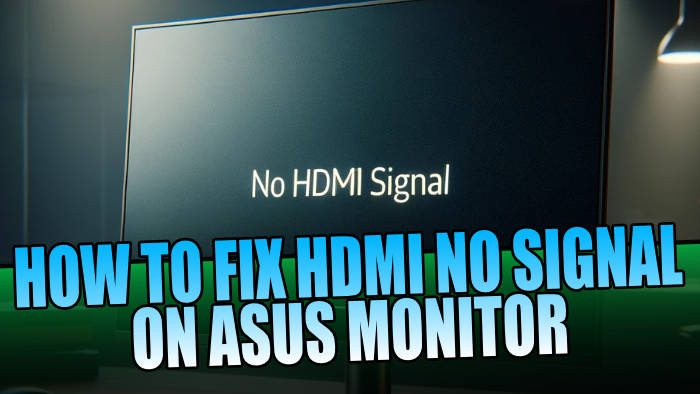In this guide, I will be showing you different methods that you can use to fix your ASUS monitor giving you an HDMI no signal error message.
Fixing an HDMI “No Signal” issue on an ASUS monitor involves several troubleshooting steps.
This problem can stem from various sources, including hardware issues, incorrect settings, or cable problems.
Table Of Contents
How to Fix HDMI No Signal on ASUS Monitor
Use the below methods to diagnose and resolve the issue.
1. Check the HDMI Cable and Connection
- Secure Connections: Ensure the HDMI cable is securely connected to both the monitor and the source device (PC, gaming console, etc.).
- Try a Different Cable: Faulty HDMI cables can cause signal issues. Try a different HDMI cable to see if the problem persists.
- Inspect for Damage: Check both the cable and the HDMI ports for any visible damage or debris.

2. Select the Correct Input Source
- Input Source Setting: Use the monitor’s buttons or on-screen display (OSD) menu to ensure the correct HDMI input source is selected. ASUS monitors often have multiple input options.
3. Power Cycle the Monitor and Source Device
- Turn Off Devices: Completely power off both the monitor and the source device.
- Unplug for a Minute: Disconnect the power cables from both for at least one minute to reset.
- Reconnect and Power On: Reconnect the power cables and turn both devices back on.
4. Update or Reinstall Graphics Drivers
- Check for Updates: On a PC, ensure your graphics card drivers are up to date. Visit the manufacturer’s website (NVIDIA, AMD, Intel) for the latest drivers.
- Reinstall Drivers: Sometimes, reinstalling the graphics drivers can resolve display issues. Uninstall the current drivers and download the latest version for your graphics card.
Use the below guides if you are not sure how to update your graphics card driver.
5. Try a Different Device
- Test with Another Device: Connect a different HDMI source to the monitor. If the new device works, the issue may lie with the original source device.

6. Adjust Display Settings on Your Computer
- Resolution and Refresh Rate: Ensure the display settings on your computer match the specifications of your ASUS monitor. Incorrect settings can prevent the signal from being detected.
- Extend or Duplicate Displays: If using a laptop, try toggling between display modes (duplicate, extend, only projector) by pressing Windows key + P.
7. Monitor Settings and Firmware
- Factory Reset: Use the monitor’s OSD menu to perform a factory reset. This can resolve issues caused by incorrect settings.
- Firmware Update: Check the ASUS website for any firmware updates for your monitor model.
8. Check for Hardware Issues
- Internal Damage: If the monitor or source device has been dropped or damaged, internal components might be affected, preventing HDMI signal detection.
9. Contact Support
- If none of the above steps resolves the issue, contact ASUS customer support for further assistance. There could be a deeper hardware issue that requires professional repair or replacement.
Final Thoughts
By going through the above methods, you should be able to identify and fix the “No Signal” issue with your ASUS monitor. Remember, if the monitor is under warranty, consulting ASUS support before attempting any troubleshooting can help avoid voiding the warranty.
I hope one of the above methods has helped you fix your ASUS monitor showing a no HDMI detected error message.


